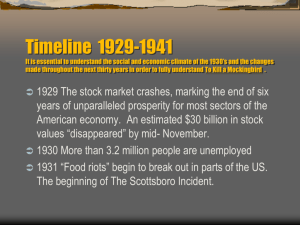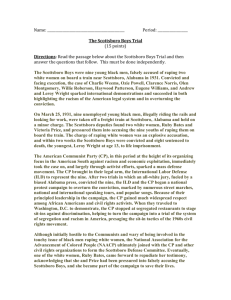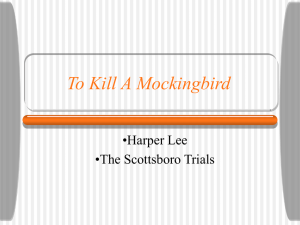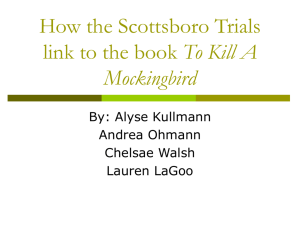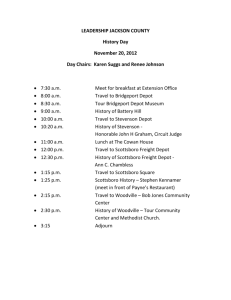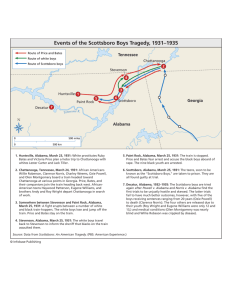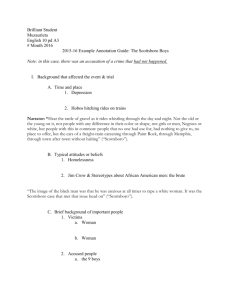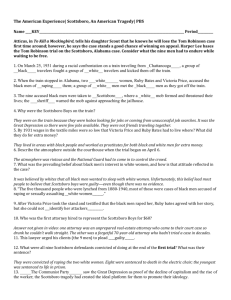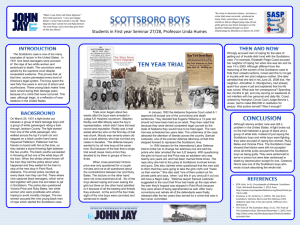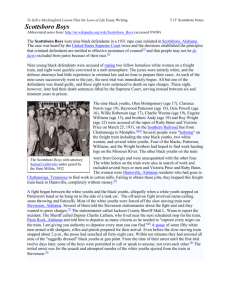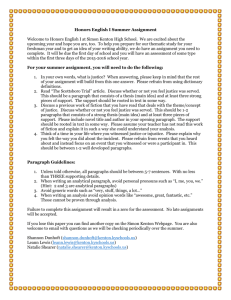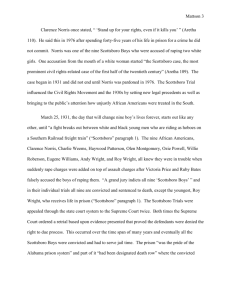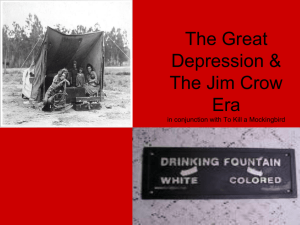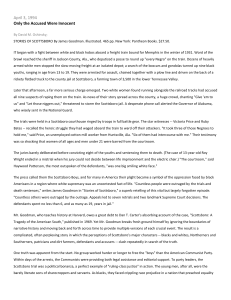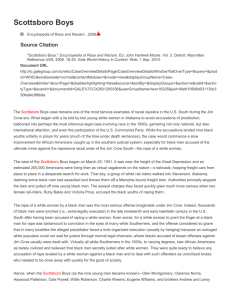The Scottsboro Trials
advertisement
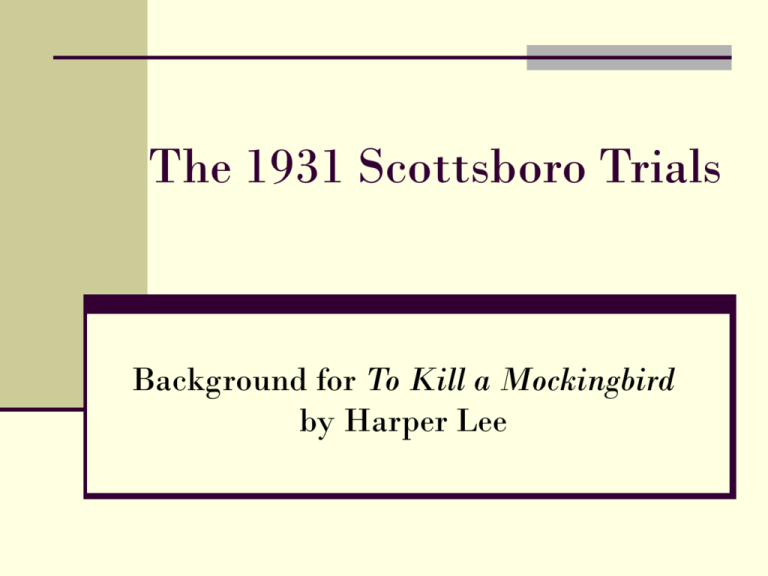
The 1931 Scottsboro Trials Background for To Kill a Mockingbird by Harper Lee Introduction to Trial No crime in American history-- let alone a crime that never occurred-- produced as many trials, convictions, reversals, and retrials as did an alleged gang rape of two white girls by nine black teenagers on the Southern Railroad freight run from Chattanooga to Memphis on March 25, 1931. Introduction to Trial Over the course of the next two decades, the struggle for justice of the "Scottsboro Boys," as the black teens were called, made celebrities out of anonymities, launched and ended careers, wasted lives and produced heroes, opened southern juries to blacks, exacerbated sectional strife, and divided America's political left. What? alleged gang rape of two white girls by nine black teenagers on the Southern Railroad freight run from Chattanooga to Memphis on March 25, 1931. Samuel Leibowitz and Haywood Patterson with his good luck horseshoe Hoboing Hoboing was a common pastime in the Depression year of 1931. For some, riding freights was an appealing adventure compared to the drudgery and dreariness of their daily lives. Others hopped rail cars to move from one fruitless job search to the next. Map of Northern Alabama Sequence of Events Soon after the train crossed the Alabama border, a white youth walked across the top of a tank car. He stepped on the hand of a black youth named Haywood Patterson, who was hanging on to its side. Patterson had friends aboard the train. A stone- throwing fight erupted between white youths and a larger group of black youths. Sequence of Events Eventually, the blacks succeeded in forcing all but one of the members of the white gang off the train. Patterson pulled the one remaining white youth, Orville Gilley, back onto the train after it had accelerated to a lifeendangering speed. Cont. Some of the whites forced off the train went to the stationmaster in Stevenson to report what they described as an assault by a gang of blacks. The stationmaster wired ahead. A posse in Paint Rock, Alabama stopped the train. Cont. Dozens of men with guns rushed at the train as it ground to a halt. The armed men rounded up every black youth they could find. Nine captured blacks, soon to be called "The Scottsboro Boys," were tied together with plow line, loaded on a flat back truck, and taken to a jail in Scottsboro. “Scottsboro Nine” Charles Weems, 19 Clarence Norris, Andy Wright, 19 (older brother of Roy Wright) Ozie Powell, 16 Olen Montgomery, 17 Eugene Williams, 13 Willie Roberson, 17 Roy Wright, 12 or 13 Haywood Patterson, 18 Also greeted by the posse in Paint Rock were two mill workers from Huntsville, Victoria Price and Ruby Bates. One of the girls, either in response to a question or on their own initiative, told one of the posse members that they had been raped by a gang of twelve blacks with pistols and knives. In the jail that March 25th, Price pointed out six of the nine boys and said that they were the ones who raped her. The guard reportedly replied, "If those six had Miss Price, it stands to reason that the others had Miss Bates." When one of the accused, Clarence Norris, called the girls liars he was struck by a bayonet. A crowd of several hundred men, hoping for a good old-fashioned lynching, surrounded the Scottsboro jail the night of their arrest for rape. Their plans were foiled, however, when Alabama's governor, B. M. Miller, ordered the National Guard to Scottsboro to protect the suspects. Trials of the Scottsboro Boys began twelve days after their arrest in the courtroom of Judge A. E. Hawkins. Haywood Patterson described the scene as "one big smiling white face." Many local newspapers had made their conclusions about the defendants before the trials began. One headline read: "ALL NEGROES POSITIVELY IDENTIFIED BY GIRLS AND ONE WHITE BOY WHO WAS HELD PRISONER WITH PISTOL AND KNIVES WHILE NINE BLACK FIENDS COMMITTED REVOLTING CRIME." Sentences Guilty verdicts in the first trial were announced while the second trial was underway. The large crowd outside the courthouse let out a roar of approval that was clearly heard by the second jury inside. Sentences When the four trials were over, eight of the nine Scottsboro Boys had been convicted and sentenced to death. A mistrial was declared in the case of twelve- year old Roy Wright, when eleven of the jurors held out for death despite the request of the prosecution for only a life sentence in view of his tender age.
